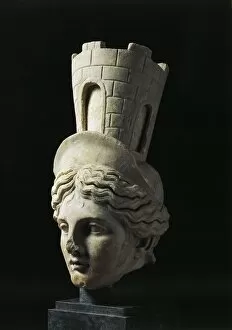Cybele Collection (#3)
Cybele, also known as Magna Mater or the Great Mother, was a Phrygian/Roman goddess who held great significance in ancient mythology
For sale as Licensed Images
Choose your image, Select your licence and Download the media
Cybele, also known as Magna Mater or the Great Mother, was a Phrygian/Roman goddess who held great significance in ancient mythology. Her worship dates back to 1702 and she was often depicted riding on a lion, symbolizing her power and strength. One notable representation can be found at the Taurobolium Altar in the National Archaeological Museum in Athens. In Madrid, Spain, there are several iconic landmarks dedicated to Cybele. The Fountain of Cibeles is a magnificent structure that showcases her divine presence. It stands proudly alongside the Puerta de Alcala, creating a picturesque scene that has captivated visitors since its construction in 1785. During the Spanish Civil War from 1936 to 1939, El pueblo de witnessed the resilience and devotion of its people towards Cybele. Despite the turmoil surrounding them, they continued to honor their beloved goddess at Fuente de Cibeles. The historic significance transcends time and is beautifully captured in digital reproductions of original artwork from the 19th century. These artworks depict her majesty and grace as she reigns over Madrid's landscape. One particularly striking portrayal can be seen on the Pergamon Altar where Goddess Rhea or Cybele rides atop a lion. This image further emphasizes her connection with nature and highlights her role as Earth-Mother. Throughout various mythologies such as Egyptian mythology, Cybele is associated with other earth-mothers like Ceres, Isis, Virgo - all represented riding chariots drawn by lions. In these depictions, she holds up a key symbolizing her link to Egyptian mythology. Cybele's legacy lives on through artistry and cultural symbolism across different eras and regions.






















